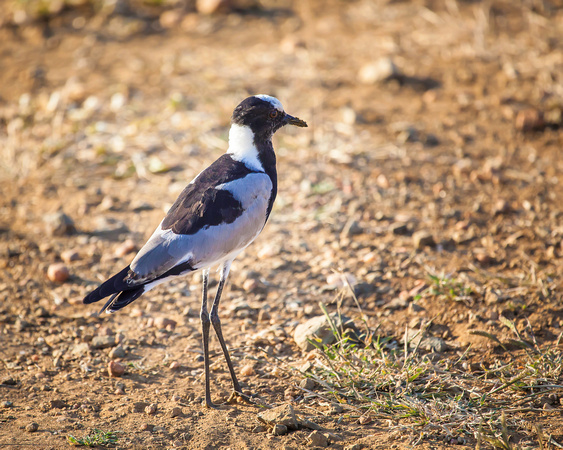Blacksmith plover (Vanellus armatus)
Blacksmith Lapwing or Blacksmith plover (Vanellus armatus)
12 inches long.
Occurs commonly from Kenya through central Tanzania to southern and southwestern Africa. The vernacular name derives from the repeated metallic 'tink, tink, tink' alarm call, which suggests a blacksmith’s hammer striking an anvil.
The blacksmith lapwing occurs in association with wetlands of all sizes. Partial to damp situations on the borders of pans, near streams and rivers where the grass is short, especially where flood waters are apt to soak the flats. Even very small damp areas caused by a spilling water trough can attract them. In South Africa they are most numerous in the mesic ( moderate or well-balanced supply of moisture,) grassland region, less so in higher-rainfall grasslands. Like the crowned lapwing, this species may leave Zambia and Zimbabwe in years of high rainfall and return in dry years. It avoids mountains of any type.
Usually found in pairs or small parties, but may be found in larger groups during the non-breeding period.
They feed on aquatic and terrestrial invertebrates, such as insects, worms and small molluscs.
Blacksmith lapwings expanded their range in the 20th century into areas where dams were built and where intensive farming was practiced. Consequently they are now numerous and established in the western Cape region of South Africa, where they were absent until the 1930s. In this region they have also entered estuarine mud flats in winter where they aggressively displace other waders.
The nest is a depression or shallow scrape often situated near water; lined with a few twigs, grass and little stones. Lays 2 to 5 eggs.
Photographed in Madikwe Game Reserve, North West, South Africa.


